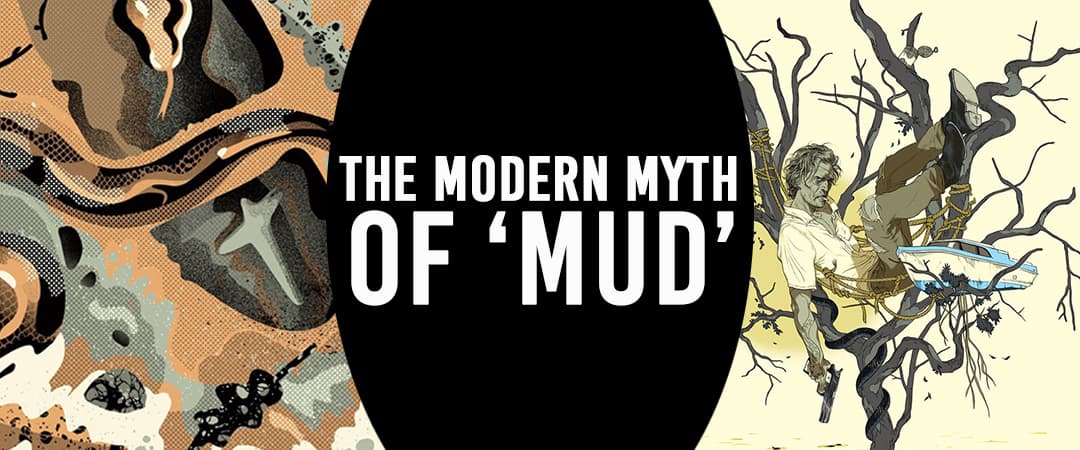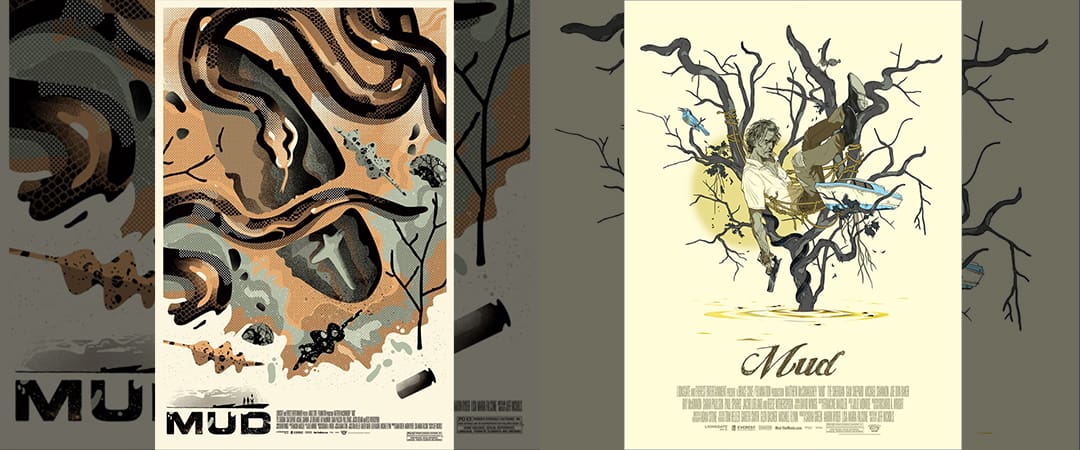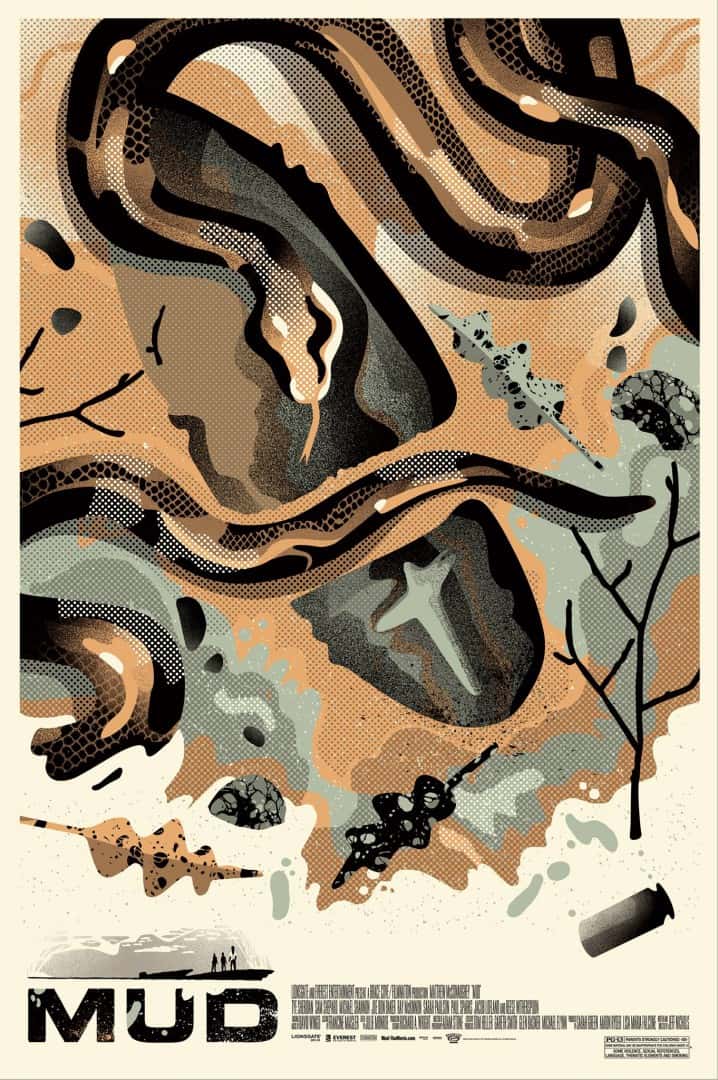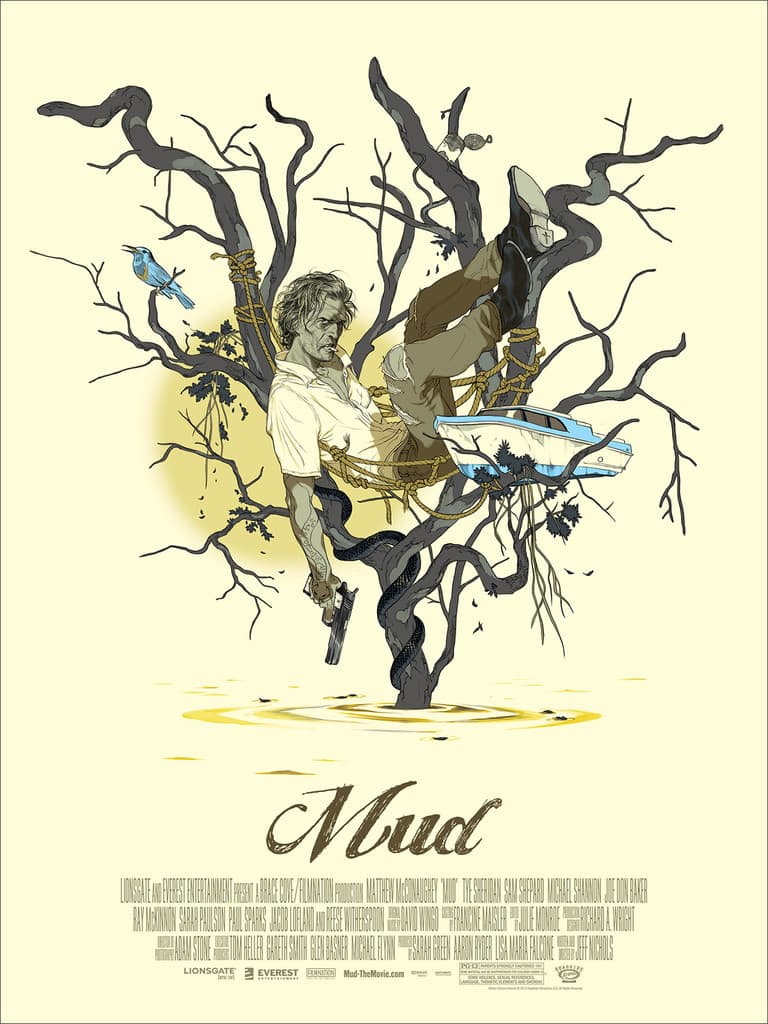
Jeff Nichols‘ 2012 film ‘Mud‘ finds the titular character in the midst of his life’s most important story and for those who will know of him later, this part of his life we, the audience, are witnessing is what his myth will be based on.
‘On that island over there, a man lived in a boat up in a tree. Went by the name Mud. He was waiting for a girl.’
Ellis, the film’s teenage hero, stumbles on Mud hiding on an island in the Mississippi River, living in the wreckage of a boat hurled up into a tree by a flood. As Ellis becomes entangled with Mud he finds a man of internalized superstitions and raw emotion. The boy had never heard of the man who goes by the name ‘Mud,’ but Mud will become a story that the young Ellis will tell for the rest of his life.

‘Mud’ by We Buy Your Kids (L) and ‘Mud’ by Tomer Hanuka (R)
On the film’s release, poster boutique gallery Mondo went to Australian based design duo We Buy Your Kids (Biddy Maroney and Sonny Day) for a limited edition screenprint to celebrate Nichols’ film. A film poster can play the role of a modern stained glass window, depicting the important moments of a story. It can convey tone and purpose. We Buy Your Kids use the medium to give us the perspective of the Earth itself. Mud’s boot to the ground, his protective cross buried in the mud. We only know of Mud because of the physical impact he makes.
Maroney and Day’s approach can be uncomfortable for the viewer. There’s a deliberate level of anxiety to their composition — askew, there is no telling up from down and like the narrative, right from wrong. The illustration follows Nichols’ lead and creates a distorted version of Mud’s reality. This is Mud as spiritual showman, a self-made shaman. He believes what he says to be true, but the only truth the audience can count on is the fact that he exists.
For the 2016 vinyl release of composer David Wingo‘s score for the film, the record label brought Illustrator Tomer Hanuka on to create the package’s artwork and accompanying poster. In Hanuka’s work, Mud sits front and center like a misfit God. The trinkets and tools of his legend strewn about his tree, his Mount Olympus. His Underworld. This is Mud as seen by an omniscient observer — a narrator at the end of Mud’s journey. Hanuka commemorates the man as he will be seen at the end of his life, not how Mud will have experienced it. This is an important distinction and a true testament to the strength of Nichols’ film — both interpretations by We Buy Your Kids and Hanuka are correct. Both illustrations capture a truth of the story, the only difference is perspective.

‘Mud’ by We Buy Your Kids

‘Mud’ by Tomer Hanuka

